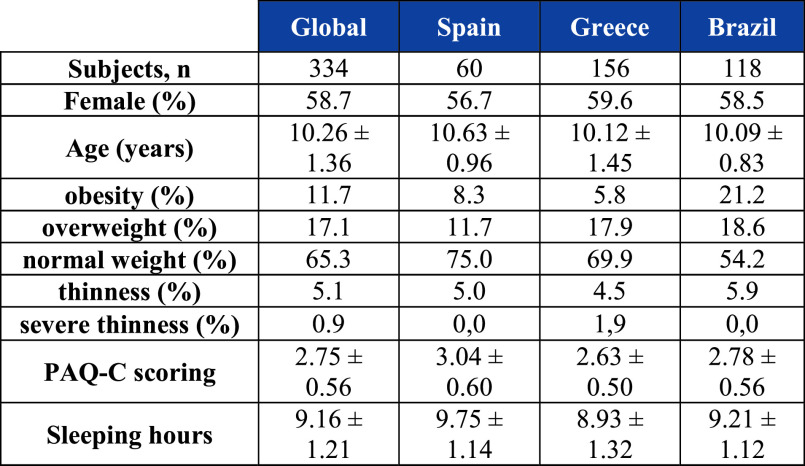Promoting Obesity Prevention and Healthy Habits in Childhood: The OCARIoT Experience
IF 3.7
3区 医学
Q2 ENGINEERING, BIOMEDICAL
IEEE Journal of Translational Engineering in Health and Medicine-Jtehm
Pub Date : 2023-03-27
DOI:10.1109/JTEHM.2023.3261899
引用次数: 3
Abstract
Objective: Long term behavioural disturbances and interventions in healthy habits (mainly eating and physical activity) are the primary cause of childhood obesity. Current approaches for obesity prevention based on health information extraction lack the integration of multi-modal datasets and the provision of a dedicated Decision Support System (DSS) for health behaviour assessment and coaching of children. Methods: Continuous co-creation process has been applied in the frame of the Design Thinking Methodology, involving children, educators and healthcare professional in the whole process. Such considerations were used to derive the user needs and the technical requirements needed for the conception of the Internet of Things (IoT) platform based on microservices. Results: To promote the adoption of healthy habits and the prevention of the obesity onset for children (9-12 years old), the proposed solution empowers children -including families and educators- in taking control of their health by collecting and following-up real-time information about nutrition, physical activity data coming from IoT devices, and interconnecting healthcare professionals to provide a personalised coaching solution. The validation has two phases involving +400 children (control/intervention group), on four schools in three countries: Spain, Greece and Brazil. The prevalence of obesity decreased in 75.5% from baseline levels in the intervention group. The proposed solution created a positive impression and satisfaction from the technology acceptance perspective. Conclusions: Main findings confirm that this ecosystem can assess behaviours of children, motivating and guiding them towards achieving personal goals. Clinical and Translational Impact Statement—This study presents Early Research on the adoption of a smart childhood obesity caring solution adopting a multidisciplinary approach; it involves researchers from biomedical engineering, medicine, computer science, ethics and education. The solution has the potential to decrease the obesity rates in children aiming to impact to get a better global health.



促进儿童肥胖预防和健康习惯:OCARIoT的经验
目的:长期行为障碍和对健康习惯(主要是饮食和体育活动)的干预是儿童肥胖的主要原因。目前基于健康信息提取的肥胖预防方法缺乏多模式数据集的集成,也缺乏为儿童的健康行为评估和指导提供专门的决策支持系统。方法:在设计思维方法论的框架下,采用持续的共创过程,让儿童、教育工作者和医疗保健专业人员参与到整个过程中。这些考虑因素用于推导基于微服务的物联网(IoT)平台概念所需的用户需求和技术要求。结果:为了促进儿童(9-12岁)养成健康习惯并预防肥胖,所提出的解决方案通过收集和跟踪来自物联网设备的营养、身体活动数据、,以及将医疗保健专业人员相互连接,以提供个性化的辅导解决方案。验证分为两个阶段,涉及西班牙、希腊和巴西三个国家的四所学校的400多名儿童(对照/干预组)。干预组的肥胖患病率比基线水平下降了75.5%。从技术接受的角度来看,所提出的解决方案给人留下了积极的印象和满足感。结论:主要研究结果证实,该生态系统可以评估儿童的行为,激励和引导他们实现个人目标。临床和转化影响声明——这项研究介绍了采用多学科方法的智能儿童肥胖护理解决方案的早期研究;它涉及生物医学工程、医学、计算机科学、伦理学和教育的研究人员。该解决方案有可能降低儿童的肥胖率,旨在改善全球健康。
本文章由计算机程序翻译,如有差异,请以英文原文为准。
求助全文
约1分钟内获得全文
求助全文
来源期刊

IEEE Journal of Translational Engineering in Health and Medicine-Jtehm
Engineering-Biomedical Engineering
CiteScore
7.40
自引率
2.90%
发文量
65
审稿时长
27 weeks
期刊介绍:
The IEEE Journal of Translational Engineering in Health and Medicine is an open access product that bridges the engineering and clinical worlds, focusing on detailed descriptions of advanced technical solutions to a clinical need along with clinical results and healthcare relevance. The journal provides a platform for state-of-the-art technology directions in the interdisciplinary field of biomedical engineering, embracing engineering, life sciences and medicine. A unique aspect of the journal is its ability to foster a collaboration between physicians and engineers for presenting broad and compelling real world technological and engineering solutions that can be implemented in the interest of improving quality of patient care and treatment outcomes, thereby reducing costs and improving efficiency. The journal provides an active forum for clinical research and relevant state-of the-art technology for members of all the IEEE societies that have an interest in biomedical engineering as well as reaching out directly to physicians and the medical community through the American Medical Association (AMA) and other clinical societies. The scope of the journal includes, but is not limited, to topics on: Medical devices, healthcare delivery systems, global healthcare initiatives, and ICT based services; Technological relevance to healthcare cost reduction; Technology affecting healthcare management, decision-making, and policy; Advanced technical work that is applied to solving specific clinical needs.
 求助内容:
求助内容: 应助结果提醒方式:
应助结果提醒方式:


